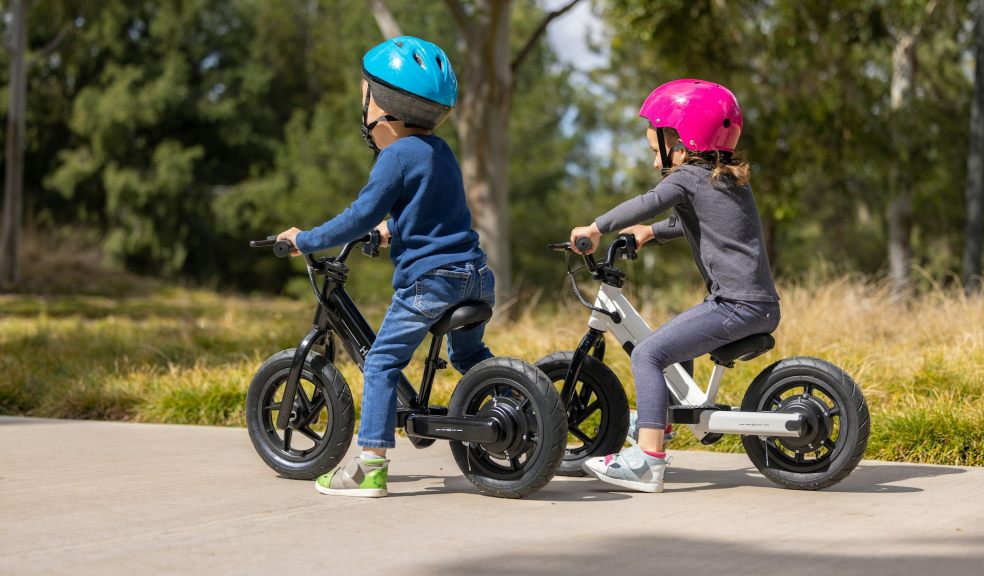
What are the Developmental Benefits of Riding Balance Bikes?
The number of children developmentally on track across five domains dropped to 54.8% in 2021 from 55.4% in 2018. A great solution to counteract such statistics and ensure your child’s steady development journey is to invest in balance bikes!
These pedal-less bikes are in the rage among parents as an effective toy to support their development through fun playtime. Designed to support their balance, coordination, and several other elements, they prepare little ones for several milestones.
So, let’s explore all the benefits they offer!
1. Improved motor skills
Balance bikes from a renowned and reputable brand engage your child’s muscle groups and improve their gross motor skills.
If you’re unaware, gross motor skills engage big muscles that help your little one walk, run, and balance their posture.
While riding these bikes, kids activate their leg muscles to propel forward, their arms to stabilise and steer the bike, and their core to keep balance. Owing to the engagement of the entire body, they strengthen different muscle groups.
As your kid continues to play with the balance bike, they grasp more control over their body, movements, direction, and speed. Improved motor skills enhance their physical development and endurance.
2. Better balance and coordination
This is another significant benefit of getting a balance bike for your child. Balance bikes help your kid move while steadying their body.
You might assume that you can buy a regular bike and have the same benefits, but that’s not the case.
However, balance bikes don’t have pedals, unlike regular bikes. So your kid doesn’t have to worry about pedals. Instead, they can completely focus on learning a sense of balance while propelling forward with their feet.
While navigating turns, controlling speed, and learning to stay upright, they build a sense of coordination and agility. Better balance and coordination help them shift to pedal bikes directly, and they won’t need training wheels at all.
3. Enhanced spatial awareness
Another developmental benefit of riding balance bikes is spatial awareness. This is your toddler’s understanding of their body with respect to their surroundings.
In simpler words, they learn to navigate and avoid obstructions on their way, judge distances, pass through tight passages without getting hurt, and judge whether they can pass through certain narrow paths.
Their experiences on their balance bikes boost their knowledge of movement and space.
Further, as your child rides the bike in different zones, whether at home, in the backyard, in the park, or even on the sidewalk, different spaces challenge their minds.
It enhances spatial awareness and teaches them to ride a real bike and be more proactive in daily tasks and sports.
4. Promotes independence and confidence
Unlike bikes with training wheels or tricycles, balance bikes enhance your toddler’s sense of independence and confidence.
The reason?
These bikes offer much more control over navigation and movement because they have no pedals. Whenever they need to stop or feel uncertain, they can use their feet. They move forward at their pace as there’s no need to pedal or apply brakes.
Owing to this autonomy, they feel more assured and recognise their control over the situation and the bike.
As they get used to the bike, they feel a sense of accomplishment, building confidence. This motivates them in diverse areas of life.
In a way, balance bikes make your toddler more eager to explore challenges. They feel that since they learned balance biking easily, they can tackle any other task equally well.
5. Builds cooperation and social interaction skills
Unknown to many, balance biking can be an amazing group activity. For instance, they can ride their balance bikes while the grownups use their actual bikes or ride with their friends or siblings in the yard.
This promotes interaction in your child with friends and family and cooperates with them. If other kids in the neighbourhood don’t have bikes, they can learn to cooperate by taking turns. This also teaches them communication and patience.
While riding with others, they also get to learn from others’ skills. For instance, they might pick new techniques for navigating the bike and uncover riding challenges. Such experiences build close bonds and teamwork.
6. Encourages problem-solving and risk evaluation
While riding a balanced bike, your child faces “problems” and “risks” in a safe and controlled environment and learns to solve and evaluate them.
While facing obstacles, they change their routes. During sharp turns or face slopes, they change their speed. These experiences, evaluations, and solutions boost critical thinking abilities.
Conclusion
Balance bikes boost your child’s development while making them resilient, resourceful, and adaptable. So, invest in a quality balance bike today and set them up for early success!













